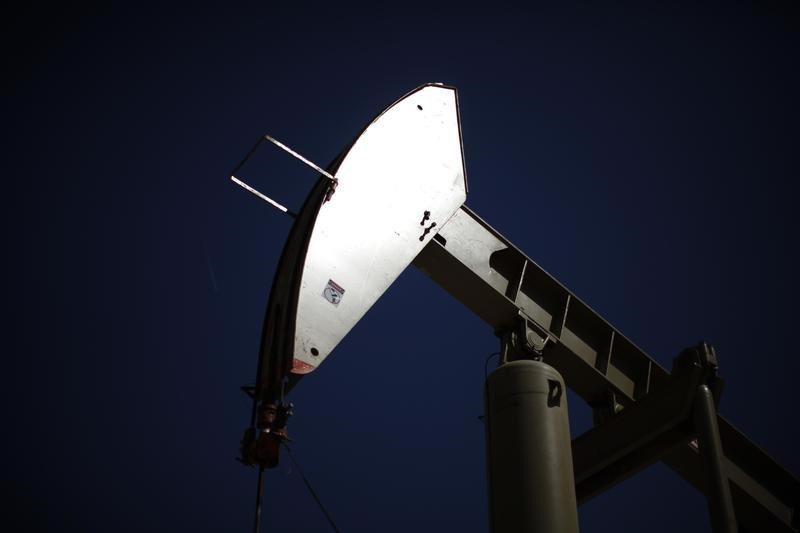Investing.com -- Crude futures plummeted more than 3% on Monday continuing their year-long slump, after quarterly GDP growth in China slowed to its lowest level in more than six years.
On the New York Mercantile Exchange, WTI crude for December delivery traded in a broad range between $46.24 and $47.91 a barrel before settling at $46.27, down 1.45 or 3.05% on the session. Texas Long Sweet futures are down more than 6% since surging to 11-week highs near $51 a barrel earlier this month. More broadly, U.S. crude futures are down more than 40% from its level 12 months ago amid a glut of oversupply on global energy markets.
On the Intercontinental Exchange (ICE), brent crude for December delivery wavered between $48.58 and $50.67 a barrel before closing at $48.63, down 1.83 or 3.63% on the day. The spread between the international and U.S. domestic benchmarks of crude stood at $2.36, near its lowest level since January.
In overnight trading, China's National Bureau of Statistics reported that GDP growth grew at 6.9% for the third quarter, decelerating at the slowest pace in more than six years. It marks the slowest period of growth in the world's second-largest economy since the first quarter of 2009 when Chinese GDP rose by 6.2%. Analysts expected third quarter GDP in China to rise by 6.8% for the three-month period ending in September.
The dismal reading could add pressure on the People's Bank of China to introduce fresh stimulus measures following its shocking devaluation of the yuan in August. The subdued growth also exacerbates concerns that the PBOC could adjust its benchmark interest rate, while pushing lending rates down even further. The downbeat economic indicators on Monday raise fears that China's annual GDP could fall under 7% for the first time in more than a decade.
In September, China consumed approximately 10.13 million barrels per day of crude oil, the second highest in the world behind the U.S.
Investors also reacted to bearish comments from Iran oil minister Bijan Namdar Zaganeh on an increased role foreign companies could assume if the Gulf state bolsters output over the next several years. It came one day after U.S. president Barack Obama urged the federal government to prepare to begin lifting sanctions against Iran on Adoption Day – a day Western powers agreed to take the initial steps toward implementing the July nuclear deal with Iran. The foreign companies, Zaganeh said, would be instrumental in raising Iran's output significantly above its pre-sanction level of 4 million bpd.
Iran reportedly has 30 million barrels of oil stored in offshore tankers ready for export, according to Reuters. Once the sanctions are lifted, Facts Global Energy, an energy consulting firm, forecasts that the Iranian oil exports could reach a level of 1.7 million barrels per day within 12 months.
The U.S. Dollar Index, which measures the strength of the greenback versus a basket of six other major currencies, gained more than 0.2% on Monday to an intraday high of 95.05. Dollar-denominated commodities such as crude become more expensive for foreign purchasers when the dollar appreciates.
